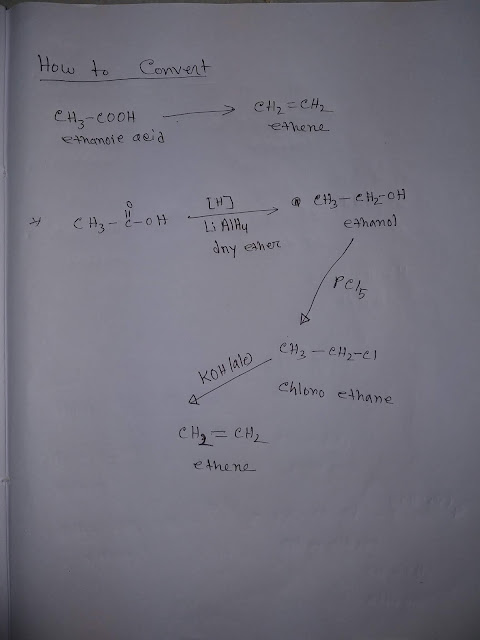【】What Is the Sodium (Na) Electron Configuration?
●Ground State Electron configuration for sodium (Na):1s² 2s² 2p⁶ 3s¹
●Expanded Electron Configuration of Sodium(Na):
1s² 2s² 2p⁶ 3s¹
●Abbreviated Electron Configuration for Sodium(Na):
[Ne] 3s¹
●Unabbreviated Electron Configuration for Sodium(Na):
1s² 2s² 2p⁶ 3s¹
●Noble Gas Electron Configuration for Sodium:
[Ne] 3s¹
●Longhand Electron Configuration for Sodium:
1s² 2s² 2p⁶ 3s¹
●Shorthand Electron Configuration for Sodium:
[Ne] 3s¹
Here is the way you can follow to write the electron configuration for Sodium (Na) in just 5 Steps.
Step-1:
The atomic number of sodium is 11.That is why sodium has 11 electrons and 11 protons.
Step-2:
Now we have to memorize the following sequence of the orbitals.Just read and write on your paper.
ss
ps ps
dps dps
fdps fdps fdps fdps....
In a line-
ss ps ps dps dps fdps fdps
fdps fdps fdps fdps.......
Step-3:
Now first numer the s-orbital (start with 1s)like this:
1s2s
p3s p 4s
dp 5s dp 6s
fdp7s fdp 8s...... According to your need.
In a line-
1s2s p3s p 4s dp 5s dp 6s
The atomic number of sodium is 11.That is why sodium has 11 electrons and 11 protons.
Step-2:
Now we have to memorize the following sequence of the orbitals.Just read and write on your paper.
ss
ps ps
dps dps
fdps fdps fdps fdps....
In a line-
ss ps ps dps dps fdps fdps
fdps fdps fdps fdps.......
Step-3:
Now first numer the s-orbital (start with 1s)like this:
1s2s
p3s p 4s
dp 5s dp 6s
fdp7s fdp 8s...... According to your need.
In a line-
1s2s p3s p 4s dp 5s dp 6s
fdp7s fdp 8s........
Remember ◆ s-orbital start with 1s
◆ p-orbital start with 2p
◆d-orbital start with 3d
◆ f-orbital start with 4f
Again,Now(second) number the p-orbital(start with 2p) like this:
ss
2ps 3ps
d 4ps d 5ps
fd6ps fd7ps fd8ps fd9ps....
In a line--
ss 2ps 3ps d4ps d5ps
fd6ps fd7ps fd8ps fd9ps....
Thirdly, number the d-orbital(start with 3d)like this:
ss
ps ps
3dps 4dps
f5dps f6dps f7dps f8dps....
In a line--
ss ps ps 3dps 4dps
f5dps f6dps f7dps f8dps....
Fourthly,number the f-orbital(start with 4f) like this:
ss
ps ps
dps dps
4fdps 5fdps 6fdps 7fdps....
In a line--
ss ps ps dps dps 4fdps 5fdps 6fdps 7fdps......
Fifltly,number s,p,d,f together like this....
1s2s
2p3s 3p4s
3d4p5s 4d5p6s
4f5d6p7s 5f6d7p8s
6f7d8p9s.........
In a line----
1s 2s 2p 3s 3p 4s 3d 4p 5s d 5p 6s 4f 5d 6p 7s 5f 6d 7p 8s
6f 7d 8p 9s.........
Step-4:
You have to know that
•S-orbital can hold maximum 2 electrons.
•p-orbital can hold maximum 6 electrons.
•d-orbital can hold maximum 10 electrons.
•f-orbital can hold maximum 14 electrons.
Step-5:
Now we know that Sodium has 11 electrons.
Electronic configuration of sodium (Na)will be...
s² s²
p⁶s¹ ps
dps dps
fdps fdps fdps....
●So,we are getting..
s² s²
p⁶s¹
Now number s-orbital according to above process.
1s² 2s²
p⁶ 3s¹
Now number p-orbital (start with 2p)according to above process.
1s² 2s²
2p⁶ 3s¹
In a line---
1s² 2s² 2p⁶ 3s¹
So the electronic configuration of sodium is given below:
1s² 2s² 2p⁶ 3s¹
Electron Configuration of sodium:
1s² 2s² 2p⁶ 3s¹
 |
| Electron Configuration Chart or Diagram for Sodium |
Next








Comments
Post a Comment